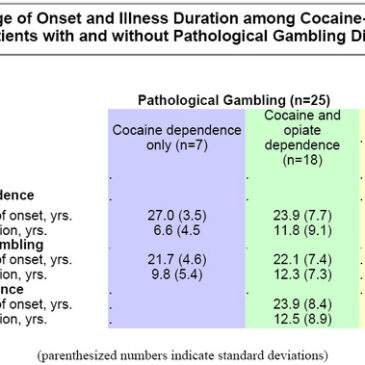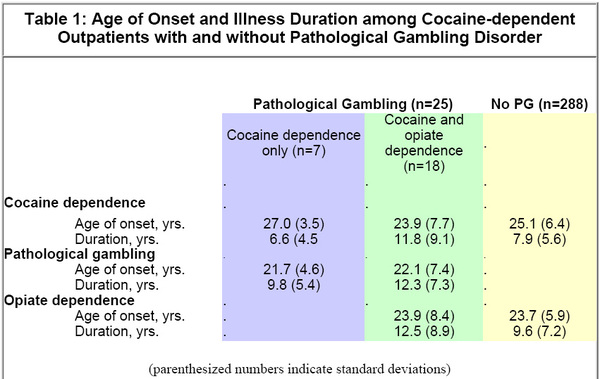In their recent study of 313 cocaine-dependent outpatients in Maryland, Hall, Carriero, Takushi, Montoya, Preston, and Gorelick (2000) found the prevalence of pathological gambling to be 8.0% [1]. When compared with the estimate of 1.5% for the general population of the state, it becomes clear that dependent cocaine users are at an increased risk for having a comorbid gambling disorder. This finding echoes the conclusions of other studies of psychiatric comorbidity reviewed in the WAGER. But Hall et al. delved beyond the assessment of concurrent disorders; they also considered age of onset and illness duration (see table 1).
It may be tempting to ignore such null findings. But the fact that cocaine dependence age of onset and duration do not differ between patients with and without pathological gambling may be important yet. Such a finding counters the hypothesis that subjects with comorbidity are qualitatively different from subjects without comorbidity. The existence of absence of differences can have important implications for treatment matching. Should patients with a history of comorbid disorders receive different treatment regimens than patients without such a history? The present findings suggest not.
References
[1] Hall, G.W., Carriero, N.J., Takushi, R.Y., Montoya, I.D., Preston, K.L., Gorelick, D.A. (2000). Pathological gambling among cocaine-dependent outpatients. American Journal of Psychiatry, 157, 1127-1133.





